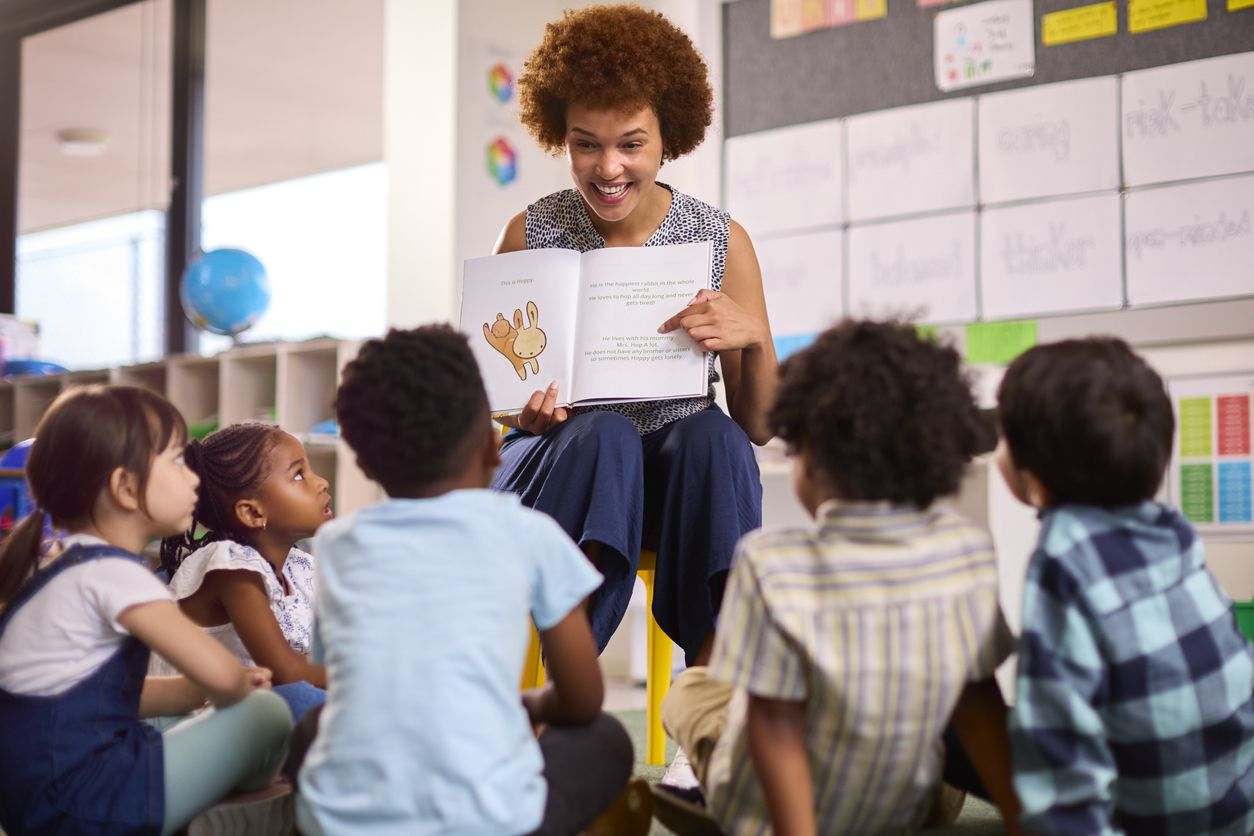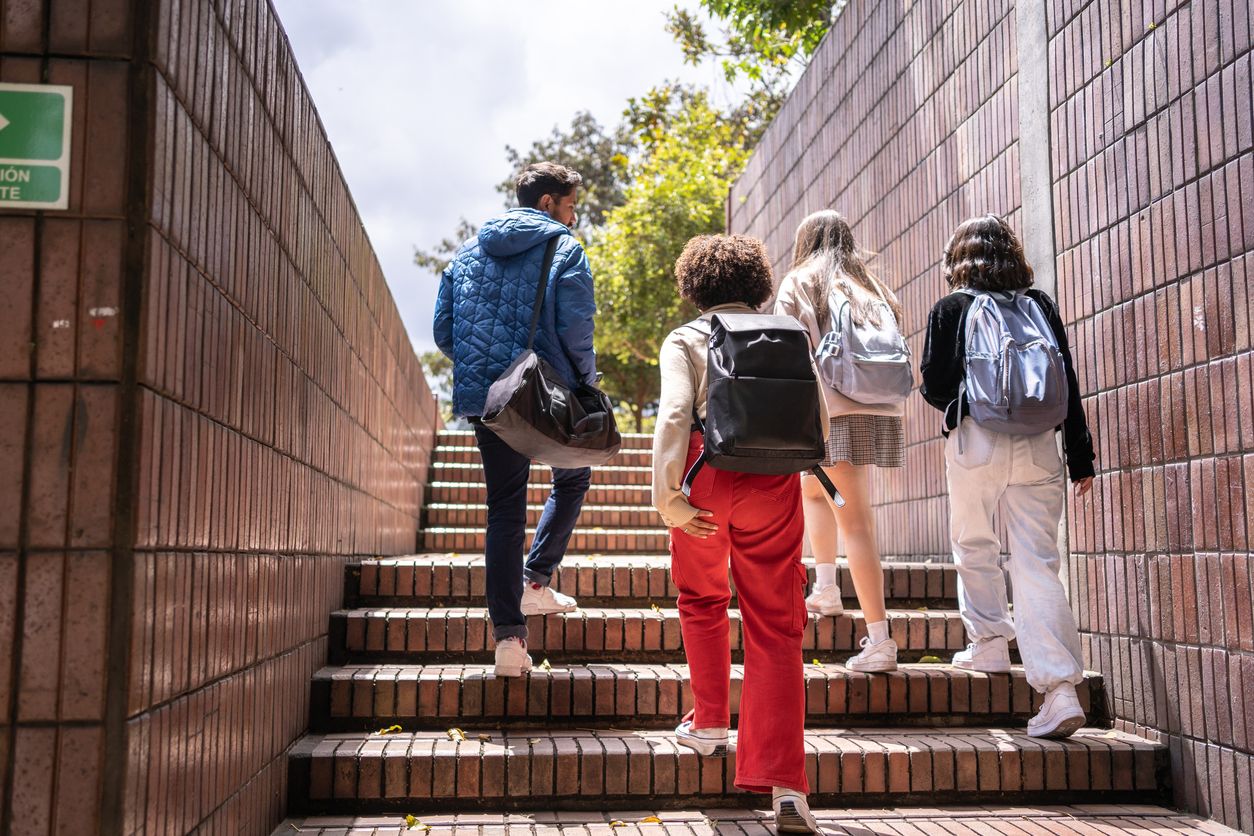School Matters

Foreword
The challenges confronting our children, young people, and communities today are perhaps the most formidable in recent memory. Global and national crises such as Covid-19, austerity measures, and a soaring cost of living have pushed essential public services to the brink. The increasing complexity and volume of demands far exceed the strained and under-resourced supply.
These crises have hit the most deprived communities hardest, perpetuating a cycle of decline spanning generations. It's evident that relying solely on short-term, isolated interventions of the past won't pave the way for a brighter future.
Communities in the bottom 10% face constant policy focus, yet interventions are often designed at a distance, laden with assumptions, and confined within the narrow scopes of government departments. This disjointed approach renders effective local implementation nearly impossible, leaving local systems in dire need of well-integrated, evidence-informed support, building on local assets rather than consistently disrupting them.
Sustainable solutions to entrenched issues like improving literacy, numeracy, inclusion, and transition between the various phases of education and onto employment extend well beyond the school gates. It requires cohesive local efforts to support children and families within their communities in constructing a credible route map to transition successfully from cradle to career.
While area-led, place-based change is possible everywhere, it's currently feasible hardly anywhere due to the lack of long-term vision, adequate investment, established evidence-informed methodology, and commitment to empowering local leaders and communities.
We are a long way behind places like Canada in terms of global best practice around place-based change whereby long term success has been achieved by bringing together residents, professionals and leaders serving that community. This means a year of discovery work, working to establish a common agenda, create a shared measurement framework, setting out the mutually reinforcing activities, establish continuous communication across the community, and having the right governance structure and backbone team in place.
Effective approaches often involve over 40 plus partners collaborating within community-sized areas to address priorities collectively. However, it's crucial to recognize that change isn't just about structures—it's a deeply human, social, and emotional process often overlooked in policy design.
Long-term, sustainable change occurs when truths are heard, trust is built, local assets are leveraged, and communities are empowered to address their priorities. This approach nurtures hope, eventually solidifying into belief as the impact becomes measurable over time.
Learning and recommendations from the Department for Education's most significant place-based investment in the form of the Opportunity Areas in recent years, aligns to the principles outlined above, emphasizing the importance of relationships, local leadership, and collaboration rooted in evidence that can transcend changing and competing organisational and political drivers.
The vital contribution from academics at The University of Manchester in this Policy@Manchester report provides further thought-provoking insight and evidence around both the key areas of focus and the collective, contextual, community-centered approach required to implement any future policies or programmes effectively. Ultimately, if we can uplift our most vulnerable children, young people, and communities, we uplift society as a whole.
Paul O'Neill
Deputy CEO, Right to Succeed
Starting a new chapter – childhood literacy education
by Rebecca Simpson-Hargreaves

In 2022, the government announced a commitment to improve literacy education as part of its levelling up agenda. The ambition to eradicate issues by 2030 has seen a tight focus on literacy skills and mandated curriculums – which neglect to acknowledge the local and individualised contexts in which teachers teach. A lack of resources, funding and access to training has compounded problems within mainstream, local authority schools, leaving budgets stretched and children at a disadvantage. In this article, Rebecca Simpson Hargreaves discusses the need for reflective practice and a dialogue for change.
- Educational policy makers should remove the formal phonics screening check assessment and use teacher assessments that take into account all aspects of reading.
- The increased focus on teaching phonics skills creates a non-balanced approach to literacy skills – with data showing that more children are not taking pleasure in reading.
- Schools lack the funding to expand on their collection of children’s literature and this includes a limited range of inclusive and representative books.
Early Reading
Performance in reading tests, particularly in early reading, has been scrutinised since the introduction of the Phonics Screening Check in 2012. Children between 5 and 6 years old are asked to read a selection of real and nonsense words as measure of their reading ability. Simply put, it tests whether they can recall grapheme phoneme correspondences (how letters are written and their related sounds) to read a word. It is worth noting that these words are not placed in the context of a story, with no reading for meaning skills needed. If the children do not meet the pass rate then they have ‘failed’ and have to re-sit the test the following year. It is not an inclusive approach; it does not differentiate between children who are fluent readers who understand what they read from those who have gained high marks because of their recall skills. The success in the screening check does not transfer seamlessly into end of Key Stage statutory results, with reading test attainment reduced. The phonics screening check is a stressful, time-consuming test and should be replaced by teacher assessment, which provides a truer reflection of children’s reading ability.
In 2021 the Department for Education’s phonics teaching validation programme came into play which saw additional prescriptive measures that schools now needed to follow. Schools had to choose from a list of providers (a costly endeavour) and ensure that the books used to support early reading had to be fully decodable (the children could sound out each word). The proposed purpose for the change was to ensure that all children had secure foundations on which to build, with desired result that they could become active engaged readers who would read for pleasure.
In recently published results from The Progress in International Reading Literacy Study (PIRLS), (a study that is valued by the government), we see an improvement in children’s ability to read and comprehend different texts. England has moved from 6th place to 4th, seeming to indicate that the policy change has been a success. However digging deeper into the data and making comparisons with England’s own performance in the previous 2016 study, it shows that we are on a downward trajectory, with more children not taking pleasure in reading and feeling less confident in reading as a whole. PIRLS 2021 international findings show a direct correlation between higher average reading achievements with those who find reading pleasurable. With only 29% of English pupils saying that they enjoy reading, it prompts the question of where does the problem lie and how can we affect change to ensure happy and knowledgeable readers?
Schools, resources, and reading for pleasure
Early years education policy makers need to ensure that children have access to quality literature, wide ranging and full of variety. The National Literacy Trust (2021) findings indicate that schools are often the place in which children are able to discover how joyful and valuable reading can be, yet 40% of schools do not have a dedicated budget for a school library. Whilst the National Curriculum sets out that there should be library facilities, there is no government provided budget to ensure this. Combine this with 1 in 5 children between the ages of 5 and 8 not having a book of their own at home and local libraries are closing, the results are gravely concerning.
Access to books that empower and inspire should not be down to a postcode or school lottery. The Great School Libraries Campaign (2023) identified that independent schools have more than double the number of resources than local authority-maintained schools. To secure a positive reading future for children, schools should be able to replenish and refresh their stock to include all representations of families, communities and wider society, both in digital and hardcopy forms.
Reading and inclusivity
Schools also lack the funding to expand on their collection of children’s literature and this includes a limited range of inclusive and representative books. In addition, the Centre for Literacy in Primary Education’s Reflecting Realities Report found that only 9% of children’s books published in 2022 include a main character from a minority ethnic background. Children are growing up in an ever-increasing multilingual world, but a focus on linguistic correctness can result in ‘home language stigma and shame’.
Policy Recommendations
- Government needs to acknowledge the funnelling effect of a focus on teaching phonics skills through fully decodable texts as the foreground of early reading. Early years primary school education policy should move to include a broader approach which removes the phonics screening check and uses teacher assessment to take into account reading for meaning and context.
- Schools need secure funding with co-ordination between local authorities and central government. They need provision to expand; to review and reflect on their current children’s literature provision and to enable them to expand on their stock, including the requirement of inclusive and representative books, recognising the value in multilingualism, texts in different home languages and cultural opportunities as vehicles for learning.
- Finally, education policy should recognise and promote the importance of reading for pleasure through ring-fenced funding to enable all schools to have access to high quality children’s literature within a dedicated library space. Council funding could be used to re-establish defunct School Library Services.


Calculating the benefits – maths to 18
By Maria Pampaka, Laura Black and Julian Williams

Prime Minister Rishi Sunak recently announced a proposal to ensure that all students continue to study maths to 18, a plan aiming to ‘boost low numeracy rates’, and to leave future school-leavers better equipped for ‘data-intensive jobs’ and managing their finances as adults. In this article, Professor Maria Pampaka, Professor Laura Black and Professor Julian Williams analyse the implications of this proposal, and make policy and practice recommendations linking back to maths to 18.
- Some groups experience negative socio-emotional outcomes (e.g. low mathematics dispositions, and/or high mathematics anxiety) towards mathematics. The evidence points particularly to gender, but other characteristics, like social and ethnic background, are equally important.
- Teaching practices in mathematics are largely perceived to be transmissionist (‘traditional’, teaching to the test, as contrasted to those where ‘connectionist’ – more student-centred and interactive approaches are preferred) by students and teachers. This teaching practice has been found to be negatively associated with students’ dispositions to engage with mathematics in the future.
- Teaching mathematics post 16 is particularly demanding and will require an expansion of the pool of confident, well qualified, and motivated teachers (at a time when the profession is currently losing people).
- A transformation of the curriculum, teaching methods and assessment is required: one that values engagement, enjoyment, confidence and inclusion as much as, or more than attainment. This is important for both learners and teachers.
Transmissionist teaching and negative outcomes
Transmissionist teaching in mathematics is a consequence of increased pressure on teachers, schools and students to perform in high stakes assessments – driven by desire to compete in performance tables both nationally and internationally such as PISA – the OECD’s Programme for International Student Assessment. PISA measures 15-year-olds’ ability to use their reading, mathematics and science knowledge and skills to meet real-life challenges.
In the UK, and in the lead up to GCSEs, where girls outperform (though slightly) boys in teacher assessments and standardised mathematics tests, our findings show that girls are more likely to develop negative emotional relationships with mathematics or demonstrate less interest in the subject.
Gender, maths and inequality
Gender and other inequalities are reproduced at every level – individual, family, community, classroom and school, regionally and nationally. These inequalities shape children’s’ attitudes towards mathematics and their aspirations for future participation. There is a wealth of literature on gender and access to and participation in mathematics. This reveals that differences in students’ attitudes and aspirations are about gender identity. For example, some cultural forms of gender identity (masculinity/femininity) can be either valued and legitimised or undermined in mathematics (both in classrooms and in popular culture). For example, we see this in popular culture where toys, films, books construct mathematicians as white, male, heterosexual ‘geeks’.
There is now widespread recognition (including in schools) that gender can no longer be defined or understood as a binary male/female. We know that emotions and stereotypes related to mathematics emerge very early in the child’s life and school career, therefore it is crucial to observe children’s developing relationships with mathematics early enough to understand and potentially side-track trajectories of disengagement from learning.
We argue that research and policy now needs to explore how socio-emotional outcomes are associated with diverse gender identities, particularly with the intersections with other cultural constructs, (e.g. ethnicity, socioeconomic status etc), that we also know shape perceptions of mathematics. Our current gender and STEM education project seeks to develop better ways to conceptualise and operationalise gender for this purpose.
Policy pathways
Equitable policy and practice, which does not solely focus on standards and attainment but promotes positive attitudes for all groups – whether gendered, ethnic, or other, can improve engagement of all learners and teachers in mathematics.
A transformation of the curriculum, pedagogy and assessment is required: one that values engagement, enjoyment, confidence and inclusion as much as or more than attainment. We say ‘more than’ because we know that engagement is the only sure means to raise attainment, and attitudes link closely with disengagement and drop out.
Education policymakers should seek to build home-school interventions that both connect school maths to the everyday lives of families – and address parents’ negative beliefs/identities around maths. Funding should be made available for knowledge transfer work and further research focusing specifically on early years.
The culture of performativity, associated pressures and transmissionist pedagogies with an emphasis on attainment to the detriment of enjoyment disadvantages and causes negative emotions for many. Policymakers examining and establishing the maths to 18 plans, such as the Department for Education and the new advisory group who will collaborate on the maths to 18 plans should focus on affective outcomes. They should be taking socio-emotional outcomes as seriously as attainment with a renewed emphasis on social inclusivity, formative assessment and connectionist learning/teaching for understanding.
Maths teachers – too many problems
Teachers – like nurses and other public service staff – are abandoning their profession for a variety of reasons, but are citing that this is not just about pay, but also conditions in the workplace and the kind of pressures that Ofsted impose. These are best exemplified in our work by teachers who say “I don’t want to teach like this but…” and reference exams, tests and performance.
The problem with teaching to students up to age 18 who wanted to drop maths is obvious: teachers who can make a good job of this will be in short supply: like hen’s teeth. The profession will need an expanded workforce of confident, well-motivated and well-qualified teachers to meet this demand.
We conclude that decades of education policy focussed on raising attainment has been most successful in discouraging engagement with mathematics learning and teaching. Increasing mathematics education for all, especially to age 18, will require policymakers to pay renewed attention to emotional aspects, i.e. the joys of mathematics.


The place of area based education partnerships
By Paul Armstrong and Belinda C. Hughes

Despite successive government initiatives with the declared intent of addressing equity and inclusion within the English education system, significant numbers of children and young people remain marginalized within, or excluded from, schools. This indicates a need for locally coordinated efforts to promote equity in education. One response to these issues is Area-based Partnerships (ABPs) which are collectives or groups of schools working with other stakeholders operating in localised contexts to support school improvement initiatives and provide professional development and training. In this article, Dr Belinda C. Hughes and Dr Paul Armstrong outline their study investigating these partnerships and make policy recommendations for their governance and accountability.
- Researchers from The University of Manchester investigated several ABPs in a study analysing their implication on local coordination within education systems.
- These partnerships can lack formal governance structures, and formal regulation and they can add further complexity to the education system.
- Governance structures of these partnerships should be formalised through a Local Authority presence.
Area-based Partnerships and our research
These partnerships have emerged in response to the discontinuation of funding for local authority education services, specifically for school improvement. This is part of a longer standing reduction in the direct involvement of local authorities in Education in England. This absence has necessitated school leaders to fill the gap left in provision with formalised collaborative arrangements in particular areas. Such partnerships comprise local Head teachers, or Multi-Academy Trust Chief Executive Officers and in many cases Local Authority officers such as Directors of Children Services.
It is against this backdrop that colleagues from The University of Manchester were commissioned by the Staff College to investigate eight of these partnerships across regions of the English school system. The study aimed to investigate such partnerships in a bid to discover:
- What conditions facilitate the establishment of ABPs
- How do they operate and what are the benefits of such partnerships
- What barriers do they face and how are these being addressed?
- What are the implications for the creation of effective forms of local coordination within education systems?
The two-year small-scale project involved identifying area-based partnerships operating in different geographical contexts (urban and rural). We looked at both well established and relatively new ABPs, those who were working directly with their local authority counterparts, those overseen by LA and those who operated exclusively beyond LAs. Initial scoping exercises revealed their foundations, aims, and status, how they were funded and how they were governed. Some were public limited companies or registered as charities for example.
Several involved maintained schools, faith schools, academies, and multi-academy trusts. Thirty interviews were conducted with colleagues directly involved in running the partnerships including head teachers, Multi-Academy Trust (MAT) CEOs, Councillors, and Directors of Teaching/development hubs.
Local context matters
The research project arranged for focus groups to share initial findings – culminating in the publication by the Staff College of Turning the Tide Report: A study of place-based partnerships. Empirical evidence from the study revealed locally coordinated efforts to promote a more equitable based education are vital – and that social and political capital are key factors in the success of ABPs.
The findings suggest that the local context of these ABPs matter, tackling issues at the local level where a deeper understanding of communities and their complexities is key. Whilst inequity amongst young people remains a major problem for schools and policy makers, area-based partnerships have a potentially important role to play in ameliorating challenges particularly when working with Local Authorities.
Coordination of local education systems
The evidence also raises questions regarding the local coordination of a system driven by a policy emphasis on school autonomy, new governance structures, and a sense of competition that can discourage schools from working with others. A further factor is the gradual reduction in the power and influence of local authorities that have traditionally taken on the responsibility of education coordination and oversight. This means that in many parts of England, no single organization has the overall picture that would enable it to orchestrate more collaborative ways of working and to step in when schools need support.
Our research findings indicate that ABPs should be led locally and work with other community stakeholders including the LA to support wider issues surrounding children’s’ mental health, attendance and learner’s needs. This would mean policymakers should consider a radical redefining of the place of schools within the wider civic society.
The Department for Education should also establish a clearer role for Department for Education Regional Directors to have more detailed oversight of these ABPs. Currently, these individuals have little to no involvement with ABPs.
Further policy recommendations
The findings lead us to propose a system of evidence-based professional accountability, coordinated at the local area level. This implies a move away from a heavy reliance on external accountability and towards an investment in the professional capital of teachers and school leaders. This would have to be challenging and credible – meaning it must not involve forms of collusion within which partners endorse one another in an acceptance of mediocrity. The implication of such a proposal is that the national system of inspection will need to be redesigned as a means of moderating local accountability procedures.
At the same time, inspectors would be positioned to develop links between area partnerships so that they can facilitate knowledge mobilisation and the sharing of good practice. Adopting an area-based approach would allow accountability measures to be directly informed by those closest to practice.
National and local policymakers in education should also consider:
- Supporting school leaders (of all school types) to work more closely with their local authorities for which both can significantly impact on the lives of children and young people.
- Encouraging school leaders to adopt a more outward looking approach that considers the wider needs within communities and the importance of investing in broader outcomes than just educational performance.
- Recognising ABPs and providing them with autonomy for setting their own contextually informed agendas
- Funding linked to wider community resources that is formalised and targeted to ABPs with local authority involvement and oversight.
We also advise that more research needs to take place on the many partnerships operating across England to gain a more detailed picture of their activity and impact.


Supporting vulnerable children over primary-secondary school transitions
By Charlotte Bagnall

The number of young children experiencing poor emotional wellbeing is increasing rapidly, most acutely for vulnerable children, such as those with special educational needs (SEND), experienced Adverse Childhood Experiences (ACEs), in receipt of Pupil Premium Funding (PPF) and have been or are at risk of being excluded and/or suspended. In this article, Dr Charlotte Bagnall explores how for these vulnerable children, primary-secondary school transitions can be especially difficult, and outlines some key recommendations for policy and practice on how we can support vulnerable children through this period of transition.
- Knowledge of how best to support vulnerable children has the potential to improve the mental health and educational trajectories of children across the life course, reducing long-term inequalities.
- Education policymakers should encourage implementation of a sensitive transition curriculum, running until the end of Year 7, with targeted support for children’s emotional wellbeing at the forefront.
- A tool being developed by Dr Charlotte Bagnall and her research team at The University of Manchester, will provide the first step within a transition curriculum by building capacity for educational practitioners and researchers to identify and support children’s emotional wellbeing during this time.
Vulnerable children – risks and outcomes
Children with SEND are especially vulnerable to poor experiences of primary-secondary school transitions, shown to report lower levels of wellbeing, experience feelings of rejection, face greater emotional and behavioural difficulties and show poorer academic performance than children without these difficulties. Children with social, emotional and mental health (SEMH) difficulties and without an education, health and care plan (EHCP) are also disproportionately more likely to be excluded and/or suspended during this time. Research shows that this can have significant negative implications for children’s self-conception, emotional wellbeing and school belonging in the short term and could impact academic attainment and life chances in the long-term.
Children with SEMH difficulties negotiate significant and unanticipated structural changes in support and standards over primary-secondary school transitions differently to their peers. This leads to children and their parents/guardians reporting feeling emotionally unsettled and unsafe. Poor adjustment during this time can exacerbate existing social inequalities and lead to poor mental health and reduced life chances.
One recommendation to manage this period more effectively for children with SEND, and especially SEMH (whom are at greater risk of exclusion and/or suspension during this time), is to improve collaboration and communication channels across systems and stakeholders. From the primary school the child is moving from and the secondary school they are moving to, it is important that parents/carers and children are included within discussions, with a key member of staff at each school for the family. This could be facilitated at the Local Authority level and would ensure that our most vulnerable children and their parents/guardians receive continuity in standards and support adjusted to meet their individual needs. It would also support short-and long-term emotional wellbeing and help children feel safe and feel a sense of control of their transition, which is shown to be paramount during this time.
Children who receive Pupil Premium Funding (PPF)
Children from low socioeconomic status backgrounds, who are in receipt of Pupil Premium Funding (a UK government grant given to schools to support disadvantaged pupils), continue to be reported as having lower academic attainment and poorer wellbeing than their peers. They are also at greater risk of being excluded from secondary school.
This can result in children in receipt of Pupil Premium Funding making less progress, widening attainment gaps in the first three years of secondary education, and this is reported to have increased further following the Covid-19 pandemic. Our recent qualitative interview research conducted with Year 6 children in receipt of this funding, has shown that these children report greater ambivalence about transition than more affluent peers, with many looking forward to transition, but simultaneously worrying about it.
Children who have experienced Adverse Childhood Experiences (ACEs)
For children who have experienced ACEs, primary-secondary school transitions can be especially difficult as many of these children experience poor emotion management and regulation. Supporting the development of children’s emotional literacy in the lead up to primary-secondary school transitions and then continuing this support into secondary school can be especially protective for all children’s emotional wellbeing, but especially for these most vulnerable children.
Recommendations
A transition curriculum
An early-intervention, gradual and sensitive primary-secondary school transition curriculum, from the beginning of Year 5 to the end of Year 7 has been recently piloted. Support for this as a “promising school-based intervention” has been referenced in recent NICE and Health Policy Scotland guidelines following my 2020 research.
The Department for Education and Local Authorities should work with educators to further develop and implement this transition curriculum more widely. As part of this transition, curriculum lessons should focus on developing children’s awareness, knowledge and ability to cope with the multiple changes experienced over primary-secondary school transition, by practicing skills, asking questions and discussing their feelings. This can help children feel prepared, but not overwhelmed by their next chapter, which has been shown within qualitative research to be a fine balancing act.
Transition provision to continue into secondary school
A systemic approach to primary-secondary school transitions provision is needed, with emotional wellbeing central to this. It is recommended that both universal and targeted support for children’s emotional wellbeing should be at the forefront of transition provision, and this should not end as children leave primary school. This support should help children to recognise, understand and manage their emotions.
Further support – P-S WELLS
It is also worth noting, that some children, and especially vulnerable children, may need further targeted support beyond this. Early detection of children who are vulnerable to poor transition and providing them with additional support tailored to their individual needs is paramount. As a first step in doing, our research team are developing a scale to measure children’s emotional wellbeing in the context of primary-secondary school transitions. This novel instrument will be named Primary-Secondary School Transitions Emotional Wellbeing Scale (P-S WELLS). It will add distinct value at a community level by developing a tool and manual to build capacity for educational practitioners to obtain immediate insight into the universal support their class needs and identification of specific children who need additional support. Education policymakers and local authorities should engage with the development and rollout of this instrument and advocate to embed this into a transition curriculum.


Mapping pathways to learning
By Claire Forbes

How to raise educational outcomes and solve the entrenched attainment gaps between more and less affluent young people has long been a policy concern of successive governments. As the current government moves away from place-based approaches and towards curricular reform to address these gaps, Dr Claire Forbes will suggest that more needs to be done to understand young people’s everyday lives within their homes, schools and communities, so that this knowledge can be used to inform policy, practice, and future reform in sustainable, contextually relevant ways.
- Assets-mapping processes could produce important knowledge and understanding about young people’s everyday lives and what they value in their learning.
- Data suggest that young people value learning when they have some degree of autonomy and choice over what they do, where and with whom.
- Education policy must be decentralised in ways that enable school leaders to work more collaboratively with young people, families, local community leaders and community assets.
Educational reform on the agenda: what can assets-mapping offer?
Given the strong public discourse focussing upon issues with school attendance and general pupil engagement and behaviour, it should come as no surprise that education reform was a hot topic during the 2023 party conferences, with a range of potential curricular and assessment reforms announced.
However, there is little evidence to suggest that such reforms will raise attainment or address the key challenges facing schools today. Instead, what is required is a deeper, more holistic understanding of young people’s everyday lives within their homes, schools and communities, in ways that might enable learning to be placed at the heart of young people’s day-to-day realities whether in school, outside in local youth centres or other local organisations, as well as in their homes and online. This reform should be informed by local places and communities for it to be positive and sustainable. Assets-based approaches might provide a possible means of securing deep and sustainable reform.
Assets-mapping is a participatory process, identifying and exploring what assets exist within their neighbourhood, and how local residents value and use these assets, or not. An asset can be both tangible such as a physical place, institution, resource or service and/or intangible – such as a personal relationship, network, skill or talent. Assets-mapping processes are successfully used in the health and social care sector, and often play an important role in social prescribing models.
Given the strong connection between health and educational outcomes, I suggest that assets-mapping processes can be applied across the education sector, and in ways that enable a more coordinated, cross-discipline policy approach (by amongst others, the Department for Levelling Up, Housing and Communities and the Department of Education in supporting local authorities). This view is supported by research conducted at The University of Manchester, mapping assets with children in schools to see how local assets might support their educational outcomes and mental health and wellbeing.
Young people need to personalise their learning
Data from these two studies suggests that local children and young people value assets that enable them to learn in positive ways, particularly where they have some sense of autonomy over the learning content, process, and who they are learning with. In this sense, young people are using virtual assets, such as social media and online networks, as a learning tool, precisely because they can personalise the content to fit with their aspirations and worldviews. For example, one participant, Pupil A, aged 14, was using the internet to learn dressmaking:
“Big kids like me; they make clothes that are really ugly. So, I want to make something that’s nice that all sizes can wear. I’ve made friends with other people with similar interests in fashion design from all over the world. I’ve some in America that I would love to visit.”
Here, Pupil A – like many other young people – is creatively curating learning pathways in ways that build upon and extend current school curricula, enabling her to better transcend the limitations placed upon her aspirations by the deficit narratives that might exist around underperforming schools, or high poverty neighbourhoods and families. As another participant says:
“You would never go to the teachers for advice, especially not about something like careers. They are not approachable and I would just feel embarrassed and ashamed. Like they might judge me.”
Having the freedom to learn and develop in autonomous ways appears to be crucial in positively supporting children and young people’s mental health and emotional wellbeing. This should be a key consideration in devising education policy, rather than a focus purely on attainment and assessment.
How can policymakers apply this?
If curricular and assessment reform is the direction of travel for the current government – and this is to be sustainable and effective – we need to deeply understand how and in what ways young people value learning. Positioning assets-mapping as a process that school leaders and local communities, with local authority coordination, might collectively enact is a potentially significant first step. It is a step that might begin to position learning as a cohesive thread across young people’s lives, both in and out of school.
If we enable schools and education leaders to apply the learnings from assets-mapping to the development of contextually relevant curricula, this initial step can be a foundation for the Department of Education to develop more holistic forms of curricular and assessment.
For this to above to happen, the Department of Education should recognise that targeted initiatives are needed for school leaders to form partnerships with families and local community assets so that they can develop this community curricular offer both in and out of school.
Levelling up, asset mapping and local control
Policymakers particularly within the Department for Levelling Up, Housing and Communities may have to find suitable ways to help build a neighbourhood’s assets-base, but without imposing deficit narratives on young people and the places where they live. Assets are generally perceived as tangible, physical entities such as libraries. But research has shown that just because for example young people identify a local library as an institutional asset, it does not follow that they will engage with its resources and improve their reading and educational outcomes. A deeper assets-mapping approach which recognises social relationships and networks, as well as virtual assets could help policy makers and education professionals to understand how best to approach this.
More local control is needed over education policy and practice, and in ways that enable an expansion of what we understand to be educational outcomes to be. Although attainment is a key outcome, there are a range of other important outcomes, including positive mental health and emotional wellbeing that must be included and these should be prioritised in any future curricular and assessment reform that is proposed by the Department of Education.
However, underpinning all the above, we simply must involve children and young people in any reform processes to ensure their unique worldviews and lived experiences can shape policy in co-productive and potentially transformative ways.


With thanks to our academic contributors
Rebecca Simpson-Hargreaves is a lecturer in the Manchester Institute of Education.
Maria Pampaka is a Professor in Social Statistics and in Manchester Institute of Education.
Laura Black is a Professor in the Manchester Institute of Education.
Julian Williams is a Professor of Education at Manchester Institute of Education.
Paul Armstrong is a Senior Lecturer at the Manchester Institute of Education at The University of Manchester.
Belinda Hughes is a lecturer at the Manchester Institute of Education, University of Manchester.
Charlotte Bagnall is a Lecturer on the B.Sc. Educational Psychology and M.Ed. Education and Psychology programmes within Manchester Institute of Education.
Claire Forbes is a Lecturer in Education and the Greater Manchester Research and Engagement Champion for Manchester Institute of Education.

Analysis and research on education
Curated by Policy@Manchester
Read more and join the debate at blog.policy.manchester.ac.uk
@UoMPolicy
#SchoolMatters
March 2024
The University of Manchester
Oxford Road
Manchester
M13 9PL
United Kingdom
The opinions and views expressed in this publication are those of the respective authors and do not necessarily reflect the views of The University of Manchester.
Recommendations are based on authors’ research evidence and experience in their fields. Evidence and further discussion can be obtained by correspondence with the authors; please contact policy@manchester.ac.uk in the first instance.

